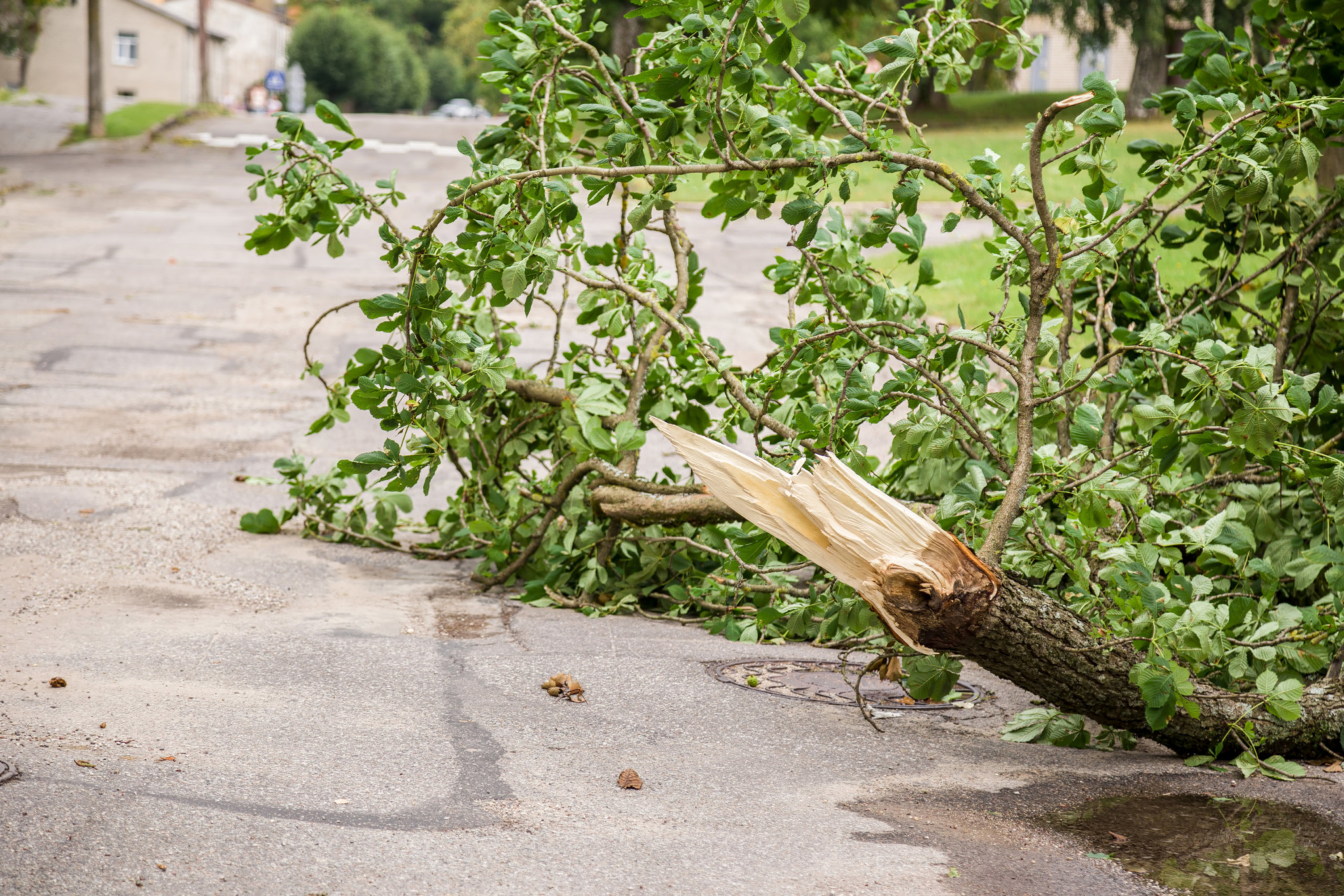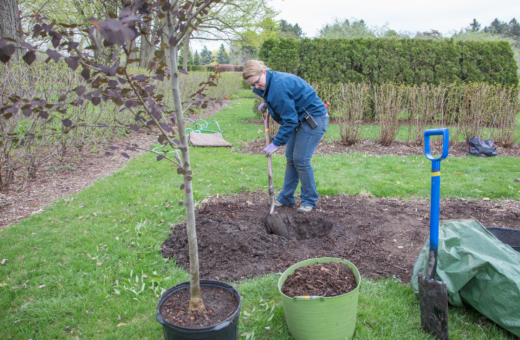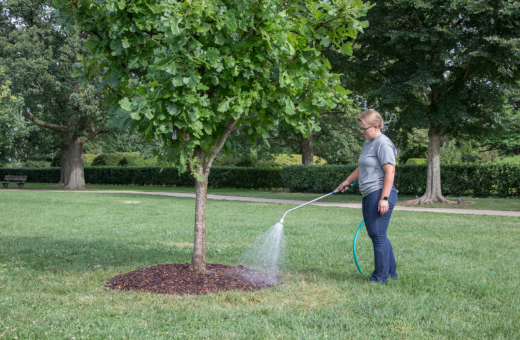Caring for Trees Before and After Storms
August 17, 2021
Windy thunderstorms often leave broken tree branches in yards and streets. When winds are very strong—as in tornadoes that hit some western suburbs of Chicago this summer—trees can be uprooted altogether.
Severe storms are becoming more frequent as the climate changes, but if you plan ahead and maintain your trees, you can reduce the risk of tree damage, says Sharon Yiesla, plant knowledge specialist at the Arboretum. Here are some of her suggestions.
Keep your trees healthy: If trees are stressed or diseased, they are much more likely to fail in high winds. Two easy ways you can help trees thrive are by watering them properly and spreading mulch properly over their roots.
Have large trees professionally inspected: If you have mature shade trees with large, heavy branches, it’s important to have them inspected every few years by a trained, certified arborist. An arborist can spot obvious weaknesses, such as cracks or decay, as well as pest or disease problems that might lead to weakness down the road. Repeat inspections every three to five years, because trees change over time.
Invest in pruning: A professional is likely to recommend pruning to remove weak or hazardous branches and balance a tree’s weight so it stands up better to heavy winds. Pruning doesn’t guarantee that a tree won’t be damaged, but it can greatly reduce the risk that branches will fail.
Be ready for the next storm. If you establish a relationship with a tree-care firm when skies are blue, it may help you after a major storm hits. Firms that are barraged with orders to remove broken or fallen branches often respond first to existing customers. Don’t wait for an emergency to find a solid company with trained workers. To find a certified arborist, check the Illinois Arborist Association or the International Society of Arboriculture.
Water when it’s dry: Make sure your large trees have enough water in the soil around their roots to stay healthy and strong. A tree that has enough water will be healthier and less stressed, which will make it more resilient in storms. Newly planted trees don’t have fully established roots, so give them extra help by watering regularly, at least every week or 10 days for two years, regardless of weather.
Give trees space. When planting a tree, make sure it’s not too close to the house, garage, sidewalks or driveways. Roots need to spread out horizontally to anchor a tree and make it more stable. Planting a spreading tree too close to the house also increases the risk of branches falling on the roof.
Don’t plant trees near power lines: Trees or branches that sway or fall onto power lines during storms may cause power outages—which forces utility crews to drastically prune trees for safety’s sake. To avoid creating a conflict, plan ahead: Don’t plant a tree within 20 feet of a power line unless it’s a naturally small tree, with a mature, full-grown height of less than than 25 feet. Plan on at least 50 feet of separation if you’re planting a large shade tree. At the Arboretum’s Gateway to Tree Science, a 40-foot-tall hackberry tree and 15-foot-tall serviceberry are planted side by side under a dummy power line to show the problem and the solution. The too-tall hackberry snags the power line, but the serviceberry will never grow tall enough to cause a problem.



